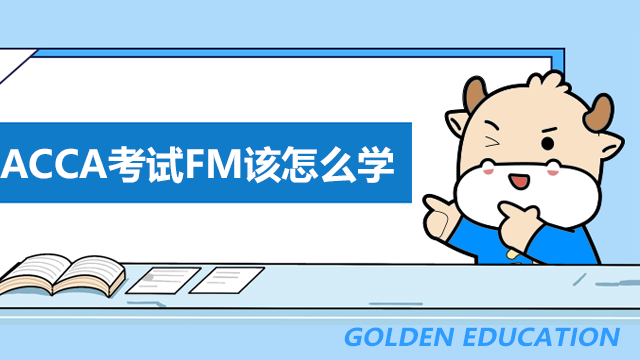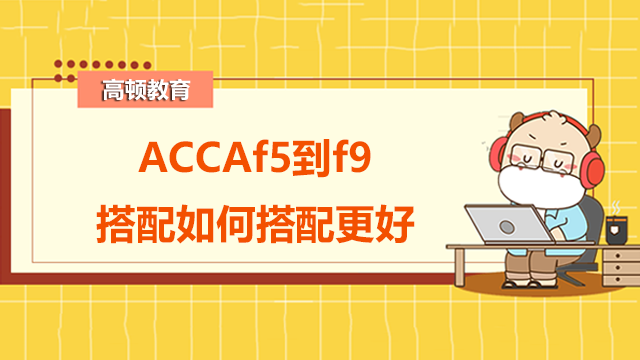每次考试结束ACCA考官都会根据本次考试考生的总体表现情况写报告,具体分析学生在答题过程中出现的问题,总结学生在备考该科目时应该注意的事项,以下是2012年12月F9考官报告:
General Comments
Congratulations to all those candidates who were successful in passing Paper F9 in December 2012! The overall performance in December 2012 was good and most candidates answered four full questions. Please read this report carefully if you were not successful in passing the paper at this sitting, as it indicates areas where candidate answers in general could be improved, as well as indicating where candidates did well. It is also recommended that this report should be read in conjunction with the detailed suggested answers written by the examiner. Overall, the highest marks were usually gained on question 1, while roughly equal marks were gained on questions 2, 3 and 4.
Specific Comments
Question One (a)
This question called for the calculation of the net present value (NPV) of a construction project for BQK Co and then comment on its financial acceptability. Many candidates gained high marks on this part of question. A nominal terms evaluation had to be undertaken because tax on profits was being paid one year in arrears, and because specific inflation rates were linked with selling price, variable cost and infrastructure costs. The nominal after-tax cost of capital of 12% was given in the question. Some answers mistakenly used the real after-tax cost of capital of 9%, or tried to calculate another discount rate altogether using the Fisher equation, but all that was needed was to use the 12% rate provided. Although the question stated that two types of houses were to be built on the development site, some candidates mistakenly treated large houses and small houses as two separate investment projects. Some candidates chose to ignore the fixed infrastructure costs which the question stated were for new roads, gardens, drainage and utilities, arguing that fixed costs were not relevant in investment appraisal, but a housing development without roads, drainage and so on would not be a practical investment. Most answers calculated correctly the nominal values of sales income, variable costs and fixed costs, and then calculated correctly and timed correctly in arrears the tax liabilities on the before-tax cash flow. The question said that capital allowances on the purchase cost of the development site were on a straight-line basis over the four year construction period. Most answers calculated correctly the associated capital allowance tax benefits, although some candidates lost marks by calculating capital allowances on a 25% reducing balance basis. Having calculated nominal after-tax cash flows, some candidates chose mistakenly to discount them with the real after-tax cost of capital of 9%. Nominal after-tax cash flows must be discounted with a nominal after-tax cost of capital (this is the nominal terms approach).
Some answers chose not to comment on the financial acceptability of the investment project and so lost a relatively straightforward mark. A small number of answers wasted valuable time by commenting at length on financial acceptability, for example by discussing critically the merits of NPV as an investment appraisal method.
Question One (b)
Candidates were asked here to calculate the before-tax return on capital employed (ROCE) of the investment project on an average investment basis and to discuss briefly its financial acceptability. Many candidates did not gain full marks here because they were not sure of how to calculate ROCE for investment appraisal purposes. The definition of ROCE in this case is average annual accounting profit as a percentage of average annual investment. Since the NPV evaluation was in cash flow terms, accounting profit had to be calculated by subtracting depreciation from investment project cash flows, a point overlooked by some candidates. Some candidates were also not aware that average annual accounting profit, rather than total accounting profit, was needed. Some candidates incorrectly chose to calculate internal rate of return (IRR), perhaps because they were confusing ROCE with IRR. It is also possible that this error was partly due to the fact that both ROCE and IRR are relative measures of investment worth.
Question One (c)
The requirement here was to discuss the effect of a substantial rise in interest rates on the financing cost of the construction company and its customers and on the capital investment decision-making process. This question allowed students to show their understanding of how a company might be affected by its economic environment and many candidates gained credit for making relevant points. For example, the increased cost of customer borrowing might lead to a reduction in forecast demand for housing that could be countered in part by a change in product mix, increasing the proportion of small houses expected to be built. Candidates who lost marks tended to do this in one of two ways. Firstly, some candidates spent time explaining why interest rates might increase in an economy, something that was not required by the question and so did not gain any credit. Secondly, some candidates explained, occasionally at length, the stages in the investment appraisal process. Again, since this had not been asked for, such explanations did not gain any credit.
#p#副标题#e#
Question Two (a)
The requirement here was to calculate the net benefit or cost of proposed changes in receivables policy, commenting on findings. The cost of an early settlement discount had to be calculated, as well as the decrease in financing cost arising from a reduction in the trade receivables balance. Candidates were expected to recognise that although current trade terms allowed credit customers to pay after 30 days, they were in fact paying on average after 60 days, as shown by a comparison between credit sales and the level of trade receivables. The average trade receivables period after introducing the proposed changes in receivables policy was 40.5 days, leading to a lower level of trade receivables and a lower financing cost. Weaker answers showed a lack of understanding of how the receivables days’ ratio links credit sales for a period with the trade receivables balance at the end of the period. Some answers, for example, tried to calculate the revised trade receivables balance by applying changed receivables days ratios to current receivables, instead of applying them to credit sales.
Question Two (b)
Candidates were asked here to calculate whether an offered bulk purchase discount was financially acceptable, commenting on assumptions made by the calculation.
Perhaps because information on holding cost and order cost was provided in the question, many candidates calculated the economic order quantity (EOQ). The question made no reference to the EOQ and an EOQ calculation was not necessary. In fact, what was needed was a comparison between the current ordering policy and the ordering policy employing the bulk discount. Candidates who wasted time calculating the EOQ found that the company was already using an EOQ approach to ordering inventory. Some answers did not gain full credit because they did not comment on the assumptions made by their calculations. Credit was also lost by candidates who could not calculate order cost, or holding cost, or both.
Question Two (c)
The requirement here was to identify and discuss the factors to be considered in determining the optimum level of cash to be held by a company. A number of answers gained marks for identifying and discussing the reasons for holding cash (transactions need, precautionary need and speculative need), the availability of finance, the need to balance profitability and liquidity, the opportunity cost of funds held in liquid form, and so on. The marking scheme gave space for ‘other relevant discussion’ here, and marks were awarded accordingly. However, many answers failed to gain reasonable marks because they did not discuss factors. For example, some answers explained the workings of the Baumol and Miller-Orr cash management models. The question did not ask for a discussion of these models and such answers gained little or no credit. Where such answers discussed factors included in the models, such as the demand for cash, the volatility of cash flows, and so on, credit was given.
Question Two (d)
This question asked candidates to discuss the factors to be considered in formulating a trade receivables management policy. Many answers gained high marks and covered a number of key factors relating to credit analysis, credit control and receivables collection. Weaker answers failed to focus on receivables collection, discussing instead a range of working capital management topics such as working capital financing policy, the analysis of current assets, trade payables policy, inventory management policy and so on.
#p#副标题#e#
Question Three (a)
The requirement here was to calculate the market value after-tax weighted average cost of capital (WACC) of a company, explaining any assumptions made. Answers were of variable quality and although some answers gained full marks, some answers gained very little credit. Most answers were able to apply correctly the capital asset pricing model (CAPM) in calculating the cost of equity, although some answers made arithmetic errors. Fewer answers were able to calculate correctly the cost of the preference shares and some answers chose to use the dividend percentage relative to nominal as the cost of capital, or to assume a value for the cost of capital. Some answers mistakenly calculated the after-tax cost of the preference shares. As preference shares pay a dividend, which is a distribution of after-tax profit, they are not tax-efficient. The calculation of the after-tax cost of debt of the convertible bonds needed the current market value of the bond, the after-tax interest payment on the bond and the conversion value of the bond. While some candidates calculated all three values correctly and went on to use linear interpolation to calculate the after-tax cost of debt, other candidates made errors with some or all of these values. A common error was to mix bond-related values (such as the $4.90 after-tax interest payment) with total debt-related values (such as the $21 million market value of the bond issue), producing some very high values in the linear interpolation calculation. Some candidates were unable to calculate the future share price as part of the conversion value calculation. Most candidates were able to calculate a WACC value, although some omitted the cost of preference shares from the calculation. An important point to consider was whether the overdraft should be included in the WACC calculation. After all, the overdraft was bigger in size than the preference share issue. Some answers considered this point and made an assumption about whether or not to include the overdraft.
Question Three (b)
The requirement here was to discuss why market value WACC was preferred to book value WACC when making investment decisions. Many answers were not of a high standard and tried to make some general points about market efficiency or about the window-dressing of financial statements. The important point here is that the weightings used in the WACC calculation need to reflect the relative importance of the different sources of finance used by a company if the WACC is to be used in investment appraisal. The market value of equity is usually much higher than its book value, so using book value weighting would underestimate the contribution of the cost of equity to WACC and therefore underestimate WACC itself, leading to sub-optimal investment decisions.
Question Three (c)
Candidates were asked here to comment on the interest rate risk faced by the company and to discuss briefly how this risk could be managed. Looking first at the interest rate risk faced by the company, many answers did not focus on the possible future changes in interest rates. While the question stated that the variable overdraft interest rate was 4% one year ago and currently stood at 6%, it was the company’s expectation of a further increase in the near future that was important. The company was exposed to interest rate risk in this case through this variable interest rate exposure To manage the interest rate risk, the company could either reduce its variable interest rate exposure by reducing its overdraft, or it could hedge the interest rate exposure either internally or externally. Answers therefore needed to discuss how to raise finance to reduce the overdraft and to discuss some of the hedging methods available to the company. It is worth remembering that the question asked for a brief discussion of hedging methods.
Question Three (d)
This part of question 3 asked for a discussion of the attractions of convertible debt compared to a bank loan of similar maturity. Since the question asked for a discussion of the relative merits of two kinds of debt, no credit was given for discussion of the relative attractions of debt and equity. Several points that could have been discussed are covered in the suggested answer to this question, such as self-liquidation, lower interest rate and increase of debt capacity on conversion. Answers that failed to gain good marks on this question were those that did not show an understanding of such points.
#p#副标题#e#
Question Four (a)
This part of question 4 asked candidates to calculate the value of a company using four different methods. Most candidates were able to calculate correctly the market capitalisation (equity market value) of the company by calculating the number of shares and multiplying this total by the market value per share. Occasional errors that arose were incorrect calculations of the number of shares and adding the value reserves to the calculated market capitalisation. Many students were not able to calculate correctly the net asset value on a liquidation basis. Some answers calculated the net asset value from the current statement of financial position information, rather than on a liquidation basis. A common error was to fail to subtract non-current liabilities, or current liabilities, or both from the revised figure for total assets. The price/earnings ratio valuation method was often calculated correctly, although some answers began by dividing earnings by the number of shares to give earnings per share, and ended by multiplying share price by number of shares to give company value, representing an unnecessary dip into and out of share-based values. Some candidates had difficulty calculating the average historical dividend growth rate, although either the arithmetic or geometric average would have been accepted. Most answers were able to offer a dividend growth model value, even when the calculated growth rate was incorrect.
The second dividend growth model valuation required the dividend growth rate to be calculated using Gordon’s growth model, as the product of the retention ratio and the return on equity. It was common to see the retention ratio calculated correctly, only to be multiplied by the cost of equity instead of the return on equity.
Question Four (b)
This question asked for a discussion of the relative merits of the valuation methods from part (a) in determining the purchase price for a company. Many answers struggle to gain good marks here. Some answers did not go beyond outlining how each business valuation method worked, i.e. the steps followed in calculating a company value. Better answers looked to identify the relative merits of each business valuation method by identifying differences between them, for example asset-based or revenue-based methods, cash-based or profit based methods, and discounted or non-discounted methods.
Question Four (c)
Candidates were asked to calculate three values: the before-tax market value of a bond, book-value debt/equity ratio and market value debt/equity ratio; and to discuss the usefulness of the debt/equity ratio in assessing financial risk. The before-tax market value of the bonds was often calculated correctly as the sum of the present values of the future interest payments on the bond and the present value of the redemption value of the bond. Occasional errors were made by selecting the wrong discount rate for the bond, or by using the wrong maturity period. Book value debt/equity ratio was more frequently calculated correctly than market value debt/equity ratio. Errors in the calculation of both ratios were sometimes made by including current liabilities in the numerator with the debt. Book value debt/equity ratio includes reserves, while market value debt/equity ratio excluded reserves, and some calculations made mistakes in this area. Discussions of the usefulness of the debt/equity ratio in assessing financial risk were often disappointing. Many discussions did not explain the nature of financial risk and showed a lack of awareness that a calculated debt/equity ratio needs a basis of comparison to have meaning. Few discussions noted that financial risk could also be assessed by interest cover.
高顿网校特别提醒:已经报名2013年ACCA考试的考生可按照复习计划有效进行!另外,高顿网校2013年ACCA考试辅导高清课程已经开通,通过针对性地讲解、训练、答疑、模考,对学习过程进行全程跟踪、分析、指导,可以帮助考生全面提升备考效果。
报考指南: 2013年ACCA考试报考指南
考前冲刺:ACCA考试试题 考试辅导
高清网课:ACCA考试网络课程
版权声明:本条内容自发布之日起,有效期为一个月。凡本网站注明“来源高顿教育”或“来源高顿网校”或“来源高顿”的所有作品,均为本网站合法拥有版权的作品,未经本网站授权,任何媒体、网站、个人不得转载、链接、转帖或以其他方式使用。
经本网站合法授权的,应在授权范围内使用,且使用时必须注明“来源高顿教育”或“来源高顿网校”或“来源高顿”,并不得对作品中出现的“高顿”字样进行删减、替换等。违反上述声明者,本网站将依法追究其法律责任。
本网站的部分资料转载自互联网,均尽力标明作者和出处。本网站转载的目的在于传递更多信息,并不意味着赞同其观点或证实其描述,本网站不对其真实性负责。
如您认为本网站刊载作品涉及版权等问题,请与本网站联系(邮箱fawu@gaodun.com,电话:021-31587497),本网站核实确认后会尽快予以处理。
 更多服务
更多服务

 报告编号:NO.20231026*****
报告编号:NO.20231026*****















































